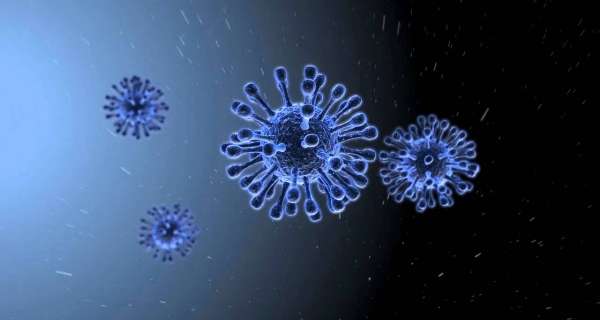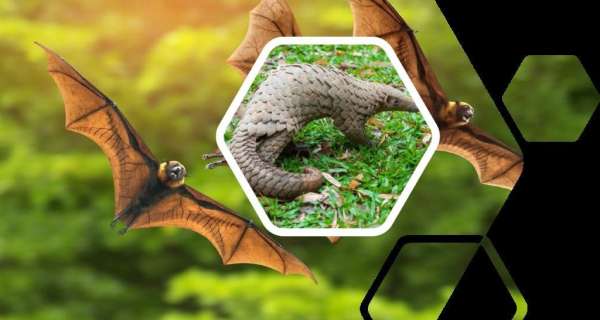Can you give the structure of the original covid-19 wuhan string
The original COVID-19 Wuhan strain is a single-stranded RNA virus, belonging to the family Coronaviridae, genus Betacoronavirus, and subgenus Sarbecovirus. The complete genomic sequence of the virus is about 30 kilobases in length and encodes 29 proteins.
The virus has a characteristic spike (S) protein on its surface, which plays a key role in allowing the virus to enter and infect host cells. The S protein binds to the host cell receptor angiotensin-converting enzyme 2 (ACE2) and mediates fusion of the viral and host cell membranes, leading to infection.
The genome of the virus is organized into several functional regions, including open reading frames (ORFs) that encode structural and non-structural proteins. The structural proteins include the spike (S), envelope (E), membrane (M), and nucleocapsid (N) proteins, which together form the viral particle.
The non-structural proteins are involved in virus replication and transcription, and include enzymes such as RNA polymerase and protease. The virus also encodes several accessory proteins, which are thought to modulate host immune responses and may play a role in virus pathogenesis.
It's important to note that since the emergence of the original Wuhan strain, the virus has undergone numerous mutations and variants have emerged, some of which have different characteristics and properties.
Are there any deviations of this virus and those found in bats. can you describe the differences
Yes, there are several differences between the SARS-CoV-2 virus that causes COVID-19 in humans and the coronaviruses found in bats, which are believed to be the natural reservoir for this family of viruses.
One of the main differences is in the spike protein, which allows the virus to bind to and enter human cells. The spike protein of SARS-CoV-2 has several unique features that distinguish it from other coronaviruses, including a receptor-binding domain (RBD) that binds more tightly to the human ACE2 receptor than other coronaviruses. This may explain why SARS-CoV-2 is more infectious and has spread more rapidly than other coronaviruses.
Another difference is in the viral genome. While the overall genomic structure of SARS-CoV-2 is similar to other coronaviruses, there are several key differences in specific genes and regions of the genome that may contribute to its pathogenicity and transmissibility.
There are also differences in the clinical presentation and disease severity caused by SARS-CoV-2 compared to other coronaviruses. For example, while some bat coronaviruses have been known to cause severe respiratory illness in humans, they have not caused the widespread global pandemic seen with SARS-CoV-2.
It's important to note that while SARS-CoV-2 is believed to have originated in bats, it likely went through an intermediate host, such as a pangolin, before infecting humans. The exact origins and evolution of the virus are still being studied and understood by scientists.
How many life cycle would it take to transfer from the bat virus variant to the wuhan variant
The exact number of life cycles it would take for a bat virus to evolve into the SARS-CoV-2 virus that caused the COVID-19 pandemic is not known.
It is believed that the virus may have gone through several mutations and adaptations in an intermediate host, such as a pangolin, before it was transmitted to humans. These mutations and adaptations may have allowed the virus to better infect human cells and become more transmissible.
However, it's important to note that viruses do not have a fixed number of life cycles or a predetermined path of evolution. Instead, they constantly undergo mutations and genetic changes as they replicate and spread. Some of these mutations may be beneficial, allowing the virus to better infect and spread in a particular host species, while others may be detrimental and lead to the virus becoming less virulent or infectious.
Are there any pangolin found which had this virus
Yes, genetic sequencing studies have suggested that pangolins may have played a role in the transmission of SARS-CoV-2 to humans. However, the extent and nature of their involvement is still being studied and is not yet fully understood.
In early 2020, researchers in China reported that they had identified a virus in smuggled pangolins that was very similar to SARS-CoV-2. This virus, known as Pangolin-CoV, had a receptor-binding domain (RBD) that was very similar to that of SARS-CoV-2. The RBD is a part of the virus that enables it to bind to receptors on human cells and infect them.
However, it's important to note that the exact origin of SARS-CoV-2 is still a matter of scientific debate and investigation, and the role of pangolins in its transmission to humans is still being studied.
what kind of pangolin was that?
The pangolin that has been implicated in the transmission of a virus similar to SARS-CoV-2 is the Malayan pangolin (Manis javanica). This species is native to Southeast Asia and is one of eight extant species of pangolins. It is also one of the most heavily trafficked and illegally traded mammals in the world, primarily due to the high demand for its scales and meat in traditional Chinese medicine.
It's important to note, however, that the exact role of pangolins in the transmission of SARS-CoV-2 to humans is still being studied and is not yet fully understood. While genetic sequencing studies have suggested that pangolins may have played a role in the evolution of the virus, the exact nature and extent of their involvement is still a matter of scientific debate and investigation.
Is it normal bat and pangolin are in close contact which each other or are they living in separated areas
Bats and pangolins are both found in many parts of the world, but they do not typically inhabit the same areas or come into close contact with each other. Bats are found in a wide range of habitats, including forests, caves, and urban areas, while pangolins are primarily found in forests and grasslands.
While the exact origin of SARS-CoV-2 is still being investigated, it is thought that the virus may have been transmitted to humans through an intermediate host, such as a pangolin, that was infected by a bat. It's important to note, however, that the precise pathway by which the virus made the jump from animals to humans is still a matter of scientific investigation and debate.




















0 Comments